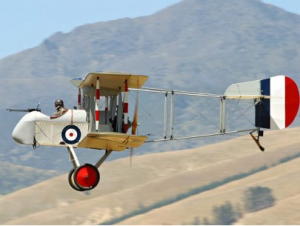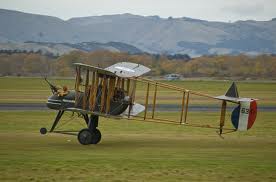For the Royal Flying Corps, a kind of salvation had arrived with the introduction of de Havilland DH2 and RAF FE2b pusher fighters. The former was a rotary-engined single-seater; the latter was a big, ungainly-looking two-seat biplane. The observer sat in the front armed with a pair of swivel-mounted machine guns; one firing forwards, the other rearwards over the top wing. FE2b crews performed heroics on an almost daily basis. Many observers owed their lives to the quick wits and strength of pilots, grabbing hold of their flying jackets and yanking them back into their cockpits in the heat of battle. Not all were so lucky. At first there were no safety belts for ‘Fee’ observers; often just a wire cable would suffice: occasionally it didn’t – with fatal consequences. In October, during a patrol over the lines, No.18 Squadron FE2bs came under attack by six German fliers. One observer, Lieutenant F S Rankin when out of his cockpit and firing back over the wing was struck in the head. His pilot only just managed to grab a hold of him, climbing out of his seat and heaving Rankin aboard before making an emergency landing. With most of the FE2b’s controls shot away and still under attack, the wounded pilot nevertheless managed to land but his observer was already dead. Such deeds were not uncommon; at least one observer successfully landed a crippled FE when its pilot had been incapacitated.


